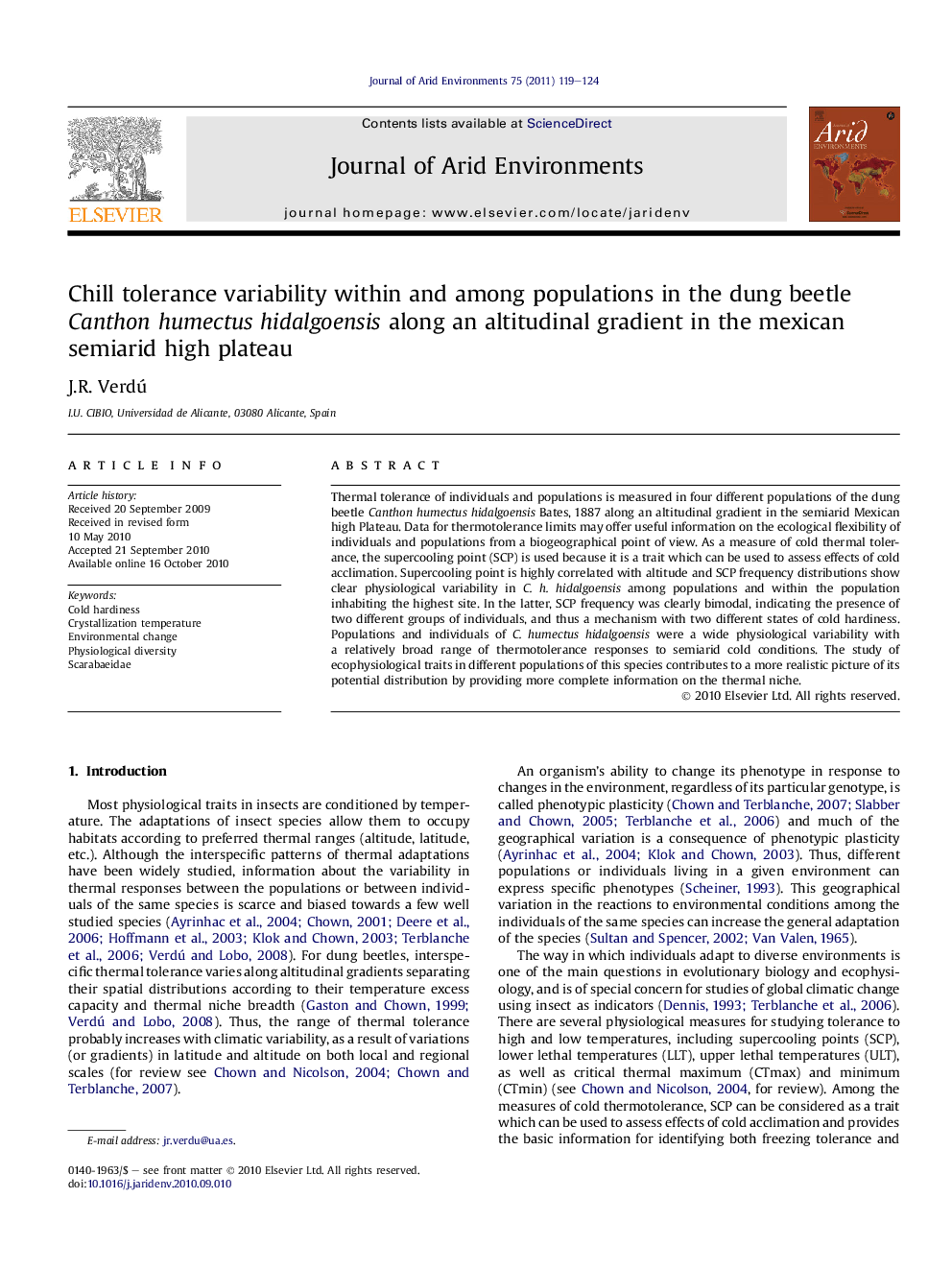| Article ID | Journal | Published Year | Pages | File Type |
|---|---|---|---|---|
| 4393598 | Journal of Arid Environments | 2011 | 6 Pages |
Thermal tolerance of individuals and populations is measured in four different populations of the dung beetle Canthon humectus hidalgoensis Bates, 1887 along an altitudinal gradient in the semiarid Mexican high Plateau. Data for thermotolerance limits may offer useful information on the ecological flexibility of individuals and populations from a biogeographical point of view. As a measure of cold thermal tolerance, the supercooling point (SCP) is used because it is a trait which can be used to assess effects of cold acclimation. Supercooling point is highly correlated with altitude and SCP frequency distributions show clear physiological variability in C. h. hidalgoensis among populations and within the population inhabiting the highest site. In the latter, SCP frequency was clearly bimodal, indicating the presence of two different groups of individuals, and thus a mechanism with two different states of cold hardiness. Populations and individuals of C. humectus hidalgoensis were a wide physiological variability with a relatively broad range of thermotolerance responses to semiarid cold conditions. The study of ecophysiological traits in different populations of this species contributes to a more realistic picture of its potential distribution by providing more complete information on the thermal niche.
Research highlights► Canthon h. hidalgoensis exhibits inter- and intra-population variability. ► Supercooling point has a significant and negative linear relationship with altitude. ► Canthon h. hidalgoensis inhabiting the highest sites have lower SCPs. ► SCP frequency distribution suggests an effect of phenotypic plasticity.
